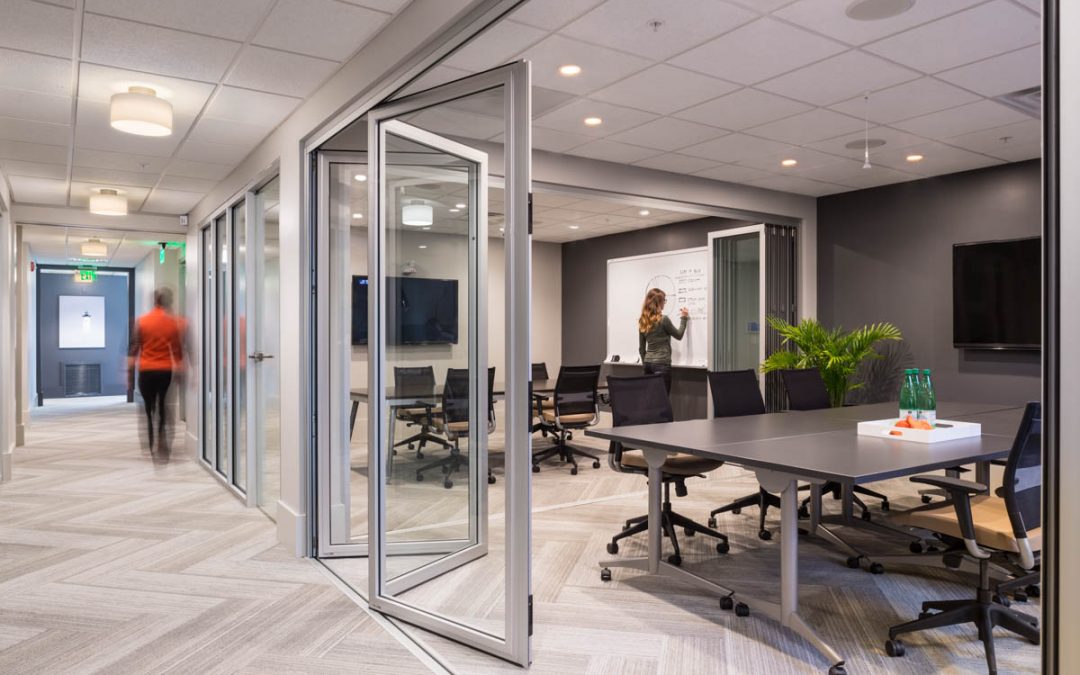One of the benefits of the roller coaster of 2020, driven largely by the global pandemic, is that we got a chance to radically rethink work. While many worked from home occasionally, we never imagined it to be the only place where the office would be.
And as much as we may prefer to be at home, the reality is that occasionally, regularly, in fact, we need a places to gather. It fosters our most basic human needs to check in with those we create, collaborate and build with. Without in person “face time” it can be a daunting task to leverage the productivity of being together.
Some of us were office regulars, others freelancers, and some of us the occasional work from home types. Then the middle of March 2020 hit and … well, we were all sent home.
And there we stayed for many months. Some of us are still there.
The Landscape Now
Here are some basic facts (thanks to allwork.space!) about how this fared for the average office worker bee in a positive way:
- 70% of respondents reported a positive experience of working from home.
- 61% of respondents said their views on WFH changed (92% for the better).
- 79% cited “no commute” as their favorite thing about working from home, followed by financial savings (55%), more time with loved ones (42%), improved focus/ productivity (28%) and environmental impact (16%).
But this same survey offered some negatives:
- 75% of respondents missed the social interaction element of the office environment.
- 34% struggled to maintain a work-life balance when working from home, with 24% finding the home environment too distracting.
- There were also concerns about the impact of WFH on both physical and mental health and communication between and within teams.
- Interestingly, 50% of respondents experienced frustration when working in a remote team.
- Things people miss most about their office include meeting rooms (45%), local restaurants and bars (43%) and events and talks (29%).
Looking at the negatives, you can see why co-working spaces will fare well in 2021 and beyond. The salient points?
- meeting rooms
- access to nearby restaurants (with outdoor seating and heat lamps!)
These two items define best practices and best qualities of pre-eminent co-working spaces.
Keeping Safe
But let’s not forget that even in late 2020 we are still in a full on pandemic. As cases rise nationally, those of us that can function in work spaces safely are faring well. And furthermore, all of the front line workers, vulnerable populations, and others who can’t avoid human contact are just as prepared today as they were in late March 2020.
And to that end, co-working spaces that are coming back on line are following strict protocols to make coworking work in an atmosphere where risk is reduced dramatically, and to near zero in every sense possible.
If you are considering a co-working space, even if only for one day per week, then look for a basic checklist of five key factors that will ensure your safety:
-
- Screening – Every responsible, focused and CDC compliant workspace should have, at a minimum a method of querying every member, entrant or guest. A simple questionnaire along with a temperature check isn’t a fool proof way to stop transmission, but it is the first point of interdiction if someone isn’t thinking through their contacts. The questionnaire will walk them through all of their recent contacts and specifically ask them if they’ve been knowingly exposed. In some cases these questionnaires are de facto legally binding documents that are signed each day. This forces the entrant to think very hard about whether they should be entering a communal space, given their own bubble, pod or limited group they interact with. The temperature probe (typically an infra red sensor gun that measures skin temperature) is also no panacea, but it is yet another way of looking at catching someone who may not be exhibiting symptoms, but is fighting something. The goal with screening is to turn people away before they are even potentially contagious, but also forcing the conversation about daily contact tracing.
- Arrows, flows and the rest of it: We know this from the super market. There needs to be clear paths of who moves what direction in which hallway. Opportunity for close contact is mitigated by the co-working space by thinking through the basic flow of the space. If you don’t see such markers on the ground, consider that the place you are entering is not following best practices.
- Water fountains / hand dryers / handles, etc. – Any location where germs, however minute, can be left on a surface need to be close. You’ll notice that at establishments that are rigidly following guidelines that water fountains, hand dryers, and even handles for doorways are off limits. Doors are blocked open (increasing air flow) and water fountains and hand drying machines are disabled.
- HVAC – This is perhaps the ultimate hallmark of best practices and best defense. By way of example, COVE Coworking in Portsmouth, NH has an upgraded HVAC capacity coupled with a UV filter that exchanges all the air in the workspace every hour and also runs it through a highly specialized filter that also subjects all the air to a form of radiation that kills and / or neutralizes any viral droplets, DNA or contagion. While this isn’t easy to do, it is perhaps one of the most critical elements of any co-working location.
- Eating and common areas – Pre COVID this was nothing to worry about. Post or “in” COVID times we need to relegate our eating to outdoors, at our desk or in any location that doesn’t subject colleagues to risk. If we treat everyone of each other as if we are infected, we can drive the risk of transmission to near zero. A co-working space that is serious about risk reduction will have common areas clearly marked as off limits.
- Mask policy – Last but not least the mask. Nothing keeps viral droplets in check better than the now infamous mask that we’ve grown accustomed to living with. A sound policy is a mask on at all times, unless at your desk or in your office. When at a desk, especially a large shared area one – seating should be 10 feet apart, but ideally even more. The CDC has shown us, time and again, that Covid-19 is highly transmissible and can enter through not only the respiratory system, but the eyes. Distance, however, is your best friend in mitigating the potency of any airborne viral particles.
- Sanitization, etc. – Lastly, the ability to wash your hands, regulate bathroom use and generally provide a methodology for eliminating any surface contamination is key. Having supplies on hand, readily available throughout the space is key.
If you’d like to know more about pandemic protocols and what the best coworking spaces in the country are doing, send us an email and we’d be glad to give you any more specific in depth information on how coworking is not only safe, but likely to be the future of what the office is, as all employers move to a hybrid of work from home, yet at the same time needing collective meeting, working and collaborative spaces.


 The Cooperative Venture Workspace is evolution of the creative, shared workspace.
The Cooperative Venture Workspace is evolution of the creative, shared workspace.